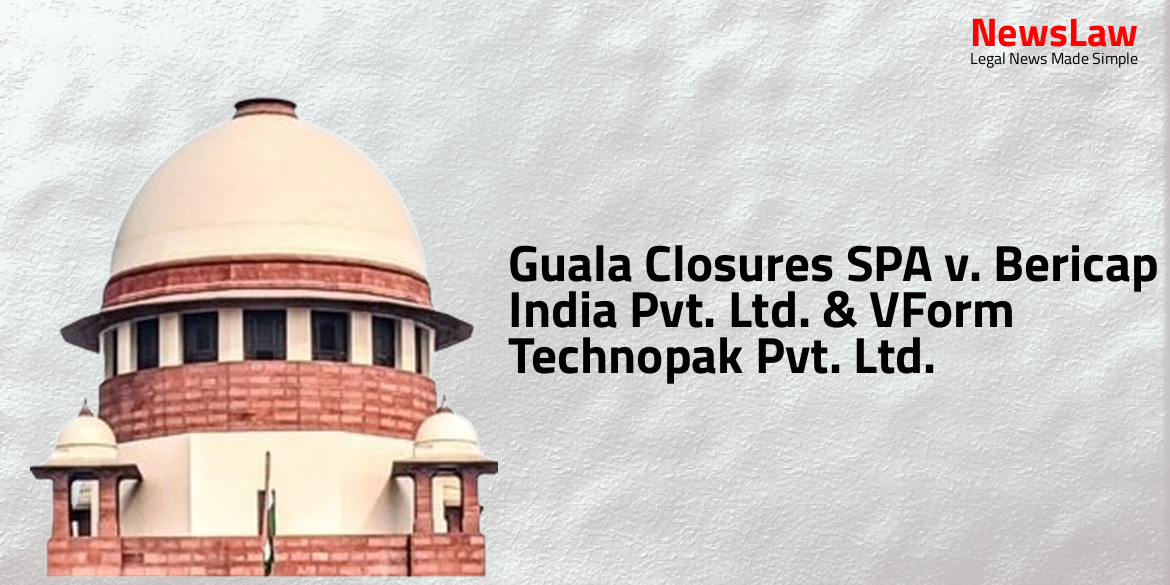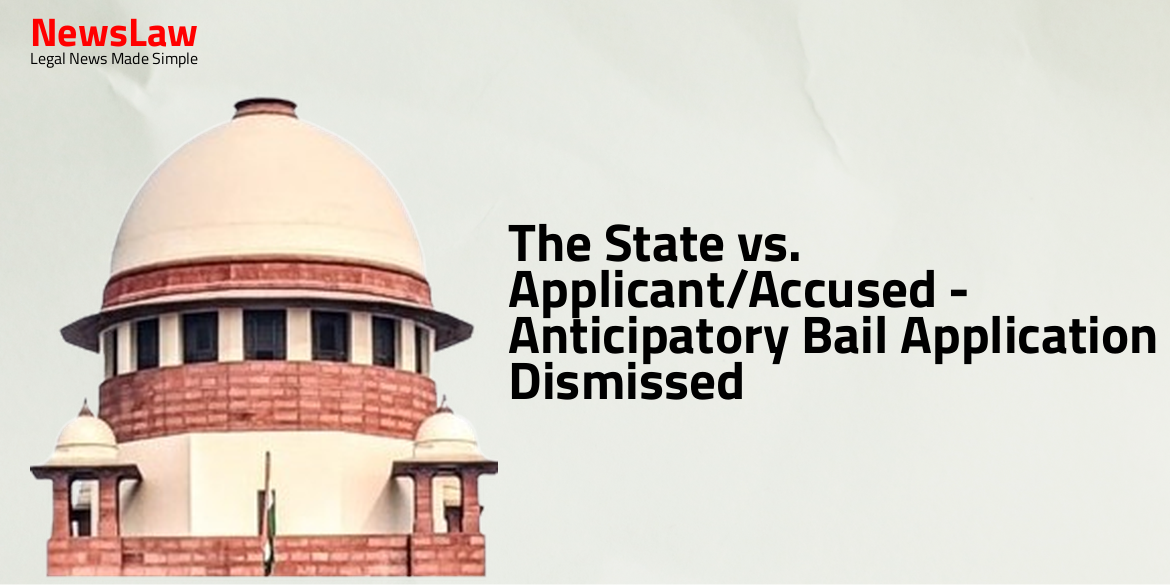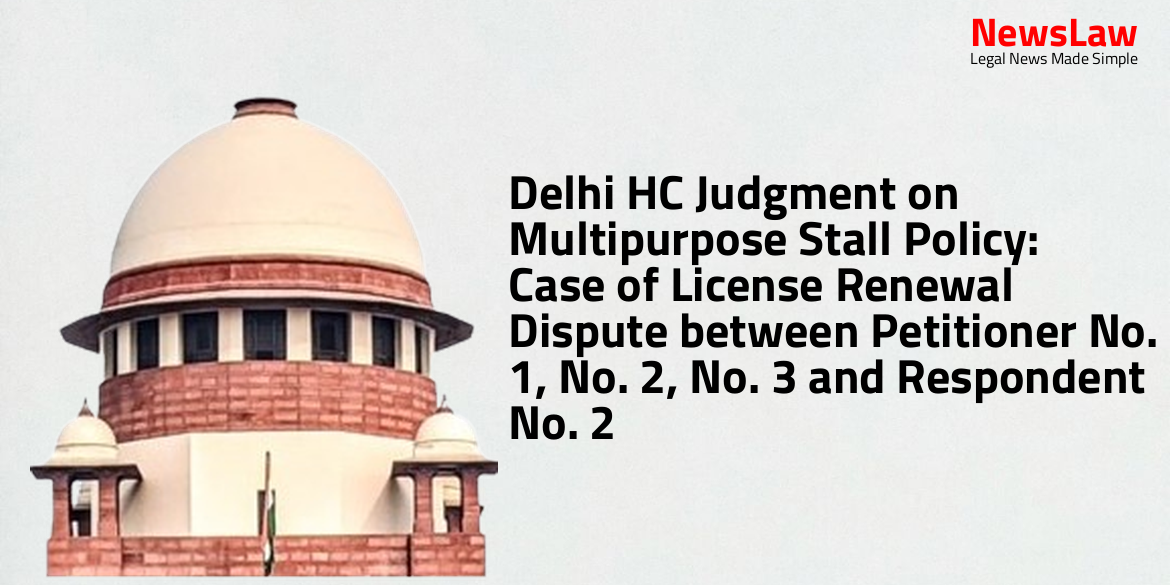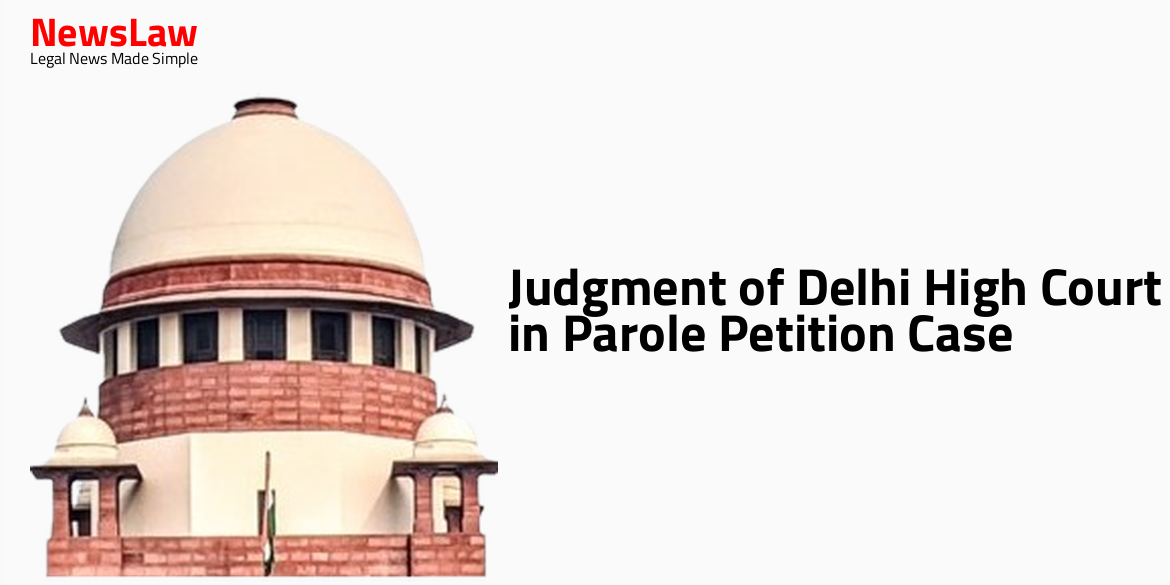Delhi High Court issued a significant ruling in the case involving Guala Closures SPA against Bericap India Pvt. Ltd. & VForm Technopak Pvt. Ltd. The judgment pertains to a patent infringement dispute, highlighting the complexities of intellectual property rights in the market. Let’s delve into the implications of this legal battle and its ramifications on the industry.
Facts
- The Plaintiff, Guala Closures SPA, is a leading multinational company in the safety closures segment.
- The suit patent titled ‘Tamper-Evident Closure with Tear Off Seal’ was granted on 19 October, 2020 in India.
- The patent application was filed by the Plaintiff in India on 12 August, 2014 with an international filing date of 26 February, 2013.
- Post-grant oppositions by Bericap India Pvt. Ltd. and VForm Technopak Private Limited were filed but were dismissed by the Deputy Controller in December 2023, confirming the validity of the patent.
- The Plaintiff manufactures a wide range of caps and closures for alcoholic and non-alcoholic products.
Arguments
- The Plaintiff’s closure has distinctive features including grooves on the inner side of the closure, which are absent in the Defendants’ closure received in March 2023.
- The Defendants’ closure lacks the fixing means present in the Plaintiff’s closure for fixing the capsule to the container.
- The Defendants argue non-infringement based on additional features in their closure, but the Plaintiff asserts that these differences do not negate infringement.
- The Plaintiff refutes the Defendants’ claims of non-infringement and emphasizes that the Defendants’ closure infringes on the Plaintiff’s patent.
- The Defendants’ closure involves malafide conduct including copying the Plaintiff’s trademark and advertisement materials.
- The Plaintiff’s closures have not been commercially used, but the Plaintiff has made substantial investments in manufacturing closures for export.
- An interim injunction is sought by the Plaintiff against the Defendants due to alleged patent infringement and malafide actions by the Defendants.
- Defendants rely on a ‘squeeze’ argument, claiming that if a claim covers their activities, it must also cover prior art.
- Patentees must balance claim assertion to cover infringement but avoid being overly broad to encompass prior art.
- Claim construction is crucial in patent litigation, influencing infringement determination and patent validity assessment.
- Defendants highlight distinct differences between Plaintiff’s and Defendants’ closures for claim construction.
- Infringement resolution depends on aligning claim language with structural and functional aspects of the closures.
- High Court of Delhi Rules state claim construction as breaking down terms in Claims and their overall scope.
- Claim construction is a key initial step in patent infringement suits, especially for mechanical products like tamper-evident closures.
- Differences between the suit patent and Defendants’ patent are considered essential for determining infringement.
- EPO’s acknowledgment of differences supports Defendants’ argument against infringement.
- No submissions made on validity, focus remains on infringement.
- Counsel for Plaintiff elucidates how each feature of patented Tamper-Evident Closure aligns with claims in the suit patent.
- Court has heard arguments from both Plaintiff and Defendants extensively, including the EPO’s grant of the patent.
Analysis
- The analysis focuses on the comparison between Plaintiff’s patent IN’522 and Defendants’ closure.
- The purpose, mechanism, and mode of attachment of the second tear-off seal in Plaintiff’s patent differ from Defendants’ product.
- The Defendants’ closure demonstrates technical advancements differentiating it from the Plaintiff’s patent.
- Important distinctions exist in the operational mechanisms and functionalities of the Plaintiff’s patent and Defendants’ closure.
- The sequential separation process of Defendants’ closure contrasts with the simultaneous detachment in Plaintiff’s patent, leading to distinct methodologies.
- The claim construction helps in evaluating the differences between the two closures.
- The Board’s stance on claim construction and pre-characterising clauses is highlighted, emphasizing the importance of understanding the patent claims.
- Notable disparities in mechanism and purpose absolve the Defendants from allegations of infringement.
- Infringement analysis involves a detailed comparison of features and functionalities of both closures.
- The unique features of Defendants’ closure prevent direct competition with Plaintiff’s patented closure.
- The balance of convenience favors the Defendants due to their substantial market presence and sales figures.
- The technical and functional differences underscore the substantive disparities between the Plaintiff’s patent and the Defendants’ product.
- Claims must be interpreted based on the terms used by the inventor, not the inventor’s subjective intent.
- Claims should be given their ordinary and general meaning reflecting the understanding of a Person of Ordinary Skill in the Art as of the patent application filing date.
- Extrinsic evidence like inventor testimony, dictionaries, and treaties can be considered cautiously as intrinsic evidence carries more weight in claim interpretation.
- The American Cyanamid Company v. Ethicon Ltd. case outlines principles for granting an injunction which must be met for infringement.
- In the case involving FH & B v. Unichem Laboratories, it was established that the main function of a court is to construe claims without reference to the specification unless there is ambiguity in the claim.
- The Herbert Markman v. Westview case emphasized that claim monopoly cannot be extended or reduced by reference to the specification.
- Claim construction in Merck v. Glenmark determined that it should be objective, focusing on the words used by the inventor and the industry’s knowledge context.
- Infringement analysis involves determining the scope of patent claims and comparing them with the device accused of infringing.
- The UK Court of Appeal in Glaverbel SA v. British Coal Corp highlighted that a patent is objectively construed by a skilled addressee’s perspective.
- The pre-characterising portion of a patent claim provides background information or context, describing elements existing in the prior art.
- The Plaintiff may be entitled to royalty payments for any use of their patented technology by the Defendant if infringement is established after trial.
- The triple test for the grant of an injunction is not met, favoring the Defendant due to the priority of the Plaintiff’s patent basis and the priority date of the suit patent.
- The balance of convenience strongly favors the Defendants as per the analysis.
- At the prima facie stage, the product of the Defendants is not considered merely an improvement on the suit patent.
- The demonstration of these points requires a full trial for confirmation.
Decision
- The present suit is released from part heard.
- Defendants to file a statement of accounts every six months by way of an affidavit
- Accounts to be furnished every six months until the disposal of the suit
- Caps/tear-off seals to be sent to the Court when the matter is listed
- I.A. 17450/2021 is disposed of
- Prayer for interim injunction is rejected
- Findings of the judgment are prima facie and for the interim injunction purpose only
- Affidavit of sales for past manufacture till 30 June 2024 to be filed by 15 July 2024
- Services of Court photographer used for infringement analysis
- Samples of caps/tear off seals used in the interim application to be retained by the Court
- Listed before Roster Bench on 22 July 2024
Case Title: GUALA CLOSURES SPA Vs. AGI GREENPAC LIMITED (2024:DHC:3715)
Case Number: CS(COMM)-706/2021



